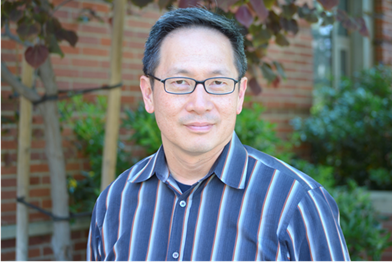
搜索网站、位置和人员

新闻与活动 活动信息
工学院专题学术讲座 | Gerard C. L. Wong: How do we discriminate a lethal, potentially pandemic-capable coronavirus from a ‘common cold’ coronavirus?
时间
2024年8月1日(周四)
13:30-15:00
地点
西湖大学云谷校区E10-201
主持
西湖大学工学院 张越 博士
受众
全体师生
分类
学术与研究
工学院专题学术讲座 | Gerard C. L. Wong: How do we discriminate a lethal, potentially pandemic-capable coronavirus from a ‘common cold’ coronavirus?
时间:2024年8月1日(周四) 13:30-15:00
Time: 13:30-15:00, Thursday August 1, 2024
地点:西湖大学云谷校区E10-201
Venue: E10-201, Yungu Campus
主持人: 西湖大学工学院 张越 博士
Host: Dr. Yue Zhang, Assistant Professor, Westlake University
语言:英文
Language: English
主讲嘉宾/Speaker:

Prof. Gerard C. L. Wong
Professor
Department of Bioengineering
University of California, Los Angeles
主讲人简介/Biography:
Gerard C. L. Wong is a Professor in the Department of Bioengineering, Department of Chemistry & Biochemistry, Dept of Microbiology, Immunology, & Molecular Genetics, and the California NanoSystems Institute at UCLA. Wong received his BS and PhD in physics at Caltech and Berkeley, respectively. He was affiliated with the Materials Science & Engineering Department and Physics Department at the University of Illinois at Urbana-Champaign before moving to UCLA in 2009. His research recognition includes a Beckman Young Investigator Award and an Alfred P Sloan Fellowship. He is a Fellow of the American Physical Society, a Fellow of the American Academy of Microbiology, and a Fellow of the American Institute for Medical and Biological Engineering.
讲座摘要/Abstract:
We can now recognize coronavirus genomic features that promote human infection. However, this is a necessary but not sufficient condition for pandemic-capable viruses, as ~25% of common colds in humans are caused by coronaviruses. It is unclear how SARS-CoV-2 infection leads to the strong but ineffective inflammatory response that characterizes severe COVID-19. Proteolytic degradation of SARS-CoV-2 virions is a critical step in host viral clearance, but the impact of viral peptide fragments at high viral loads is largely unknown. Using high-resolution mass spectrometry, we identify in tracheal aspirates of critical COVID-19 patients SARS-CoV-2 peptide fragments with architectures similar to antimicrobial peptides (AMPs), which are part of the amplification machinery in innate immunity. To assess effects of AMP-like viral fragments, we use machine learning to map out all sequence motifs in the SARS-CoV-2 proteome that mimic host antimicrobial peptides (‘xenoAMPs’). Such xenoAMPs are strongly enriched in SARS-CoV-2 relative to low-pathogenicity coronaviruses. Moreover, xenoAMPs from SARS-CoV-2 but not low-pathogenicity homologs chaperone and organize dsRNA into structured complexes with lattice constants commensurate with the steric size of Toll-like receptor TLR-3 and therefore capable of cooperative multivalent binding. Such complexes amplify cytokine secretion in diverse uninfected cell types in culture (epithelial cells, endothelial cells, monocytes, and macrophages). The induced transcriptome matches well with the global gene expression pattern in COVID-19, despite using <0.3% of the viral proteome. Delivery of these complexes to uninfected mice boosts plasma IL-6 and CXCL1 levels as observed in COVID-19 patients. We review COVID-19 consequences, including selective suppression of immune cell types, coagulation pathologies, cardiac inflammation, long-term cardiovascular outcomes, and connect them to SARs-CoV-2 viral fragments.
讲座联系人/Contact:
王婕
wangjie@westlake.edu.cn

















